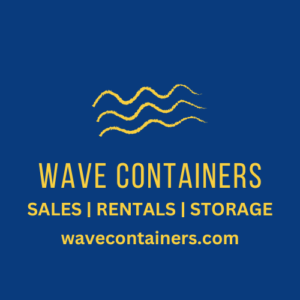What Are Shipping Containers Really Called?
Exploring Sea Cans, C-Cans, Conex & More
When you hear someone mention a “sea can,” “C can,” or even “Conex box,” don’t worry—they’re all referring to the same thing: those big steel boxes used to haul cargo around the world. But why so many names? Let’s unpack it.
1. Shipping Container
The most formal and widely recognized term. It speaks to the container’s original—and still core—function: transporting goods by sea and beyond. These robust metal boxes support intermodal shipping (ship, rail, truck) with minimal handling.
2. Sea Container (or C
Container)
A colloquial term emphasizing the ocean-going role of these units. “Sea container” is often shortened to “C container,” where “C” stands for “sea.”
3. Sea Can (or C Can)
Perhaps the most popular slang, especially in Canada. Designed for ocean transport, these containers earned the “sea can” label—and then naturally got shortened to “C can.”
4. Sea Bin (or C Bin)
Less common but follows the same naming pattern. “Sea bin” sometimes gets shortened to “C bin,” especially in casual conversations.
5. Ocean Container / Cargo Container / Freight Container
These names spotlight the main use case—moving cargo across oceans or land. All are interchangeable terms for the same standardized units.
6. Intermodal Container
This highlights versatility: a container that moves effortlessly between ship, rail, and truck—no cargo transfer needed. The design follows standardized ISO specs, enabling global compatibility.
7. ISO Container
These containers meet rigorous ISO standards (size, strength, stacking capability)—essential for international shipping operations. Most modern containers are ISO compliant.
8. Sea Train Container (C Train Container)
This moniker is rooted in the dual use of containers for sea and rail transport, and sometimes tied to Seatrain Lines—a historic North American carrier. “C train container” remains a niche term to describe them.
9. Conex Box / Container Express
A term dating back to military logistics in the Korean War era. Short for “Container Express,” Conex boxes were precursors to modern shipping containers. Today it’s still casually used to describe standardized steel containers.
10. Moving Container / Storage Container
When used on land—at homes, construction sites, or events—these containers serve as storage or moving units. They get called moving containers or storage containers in that context.
Quick Reference Table
| Name(s) | Highlights | Where Used |
| Shipping Container | Formal, general | Global shipping/storing |
| Sea Container / C Container | Emphasis on ocean freight | Ports, shipping industry |
| Sea Can / C Can | Slang, especially in Canada | Cargo ads, regional use |
| Sea Bin / C Bin | Variant of sea can | Less common |
| Ocean / Cargo / Freight Container | Cargo-focused terminology | Logistics, trade |
| Intermodal Container | Multi-modal transport capability | Rail/truck/ship logistics |
| ISO Container | Standardized under ISO specifications | International shipping |
| C Train Container | Emphasis on sea + rail use | Some regional usage |
| Conex Box (Container Express) | Historical/military root | US-based usage |
| Moving Container / Storage Container | Portable storage on land | Home, site storage |
Why So Many Names?
- Function & Use Case: Terms like “shipping,” “cargo,” or “storage” reflect how the container is used at the moment.
- Regional Slang: “Sea can,” “C can,” and “C bin” are especially popular in Canada and parts of North America.
- Historical Roots: Some names like “Conex box” derive from early military or industry usage.
- Standardization: Names like ISO and intermodal emphasize engineered specs that make global interchangeability possible.
In Summary:
No matter what you call it—sea can, C can, shipping container, freight container, or even Conex box—you’re talking about the same rugged, standardized steel unit designed to move goods safely across the world. The name you choose often hints at how or where it’s used. Whatever terminology fits your context, it’s still the same box playing a central role in global trade.



Leave a Reply
Want to join the discussion?Feel free to contribute!